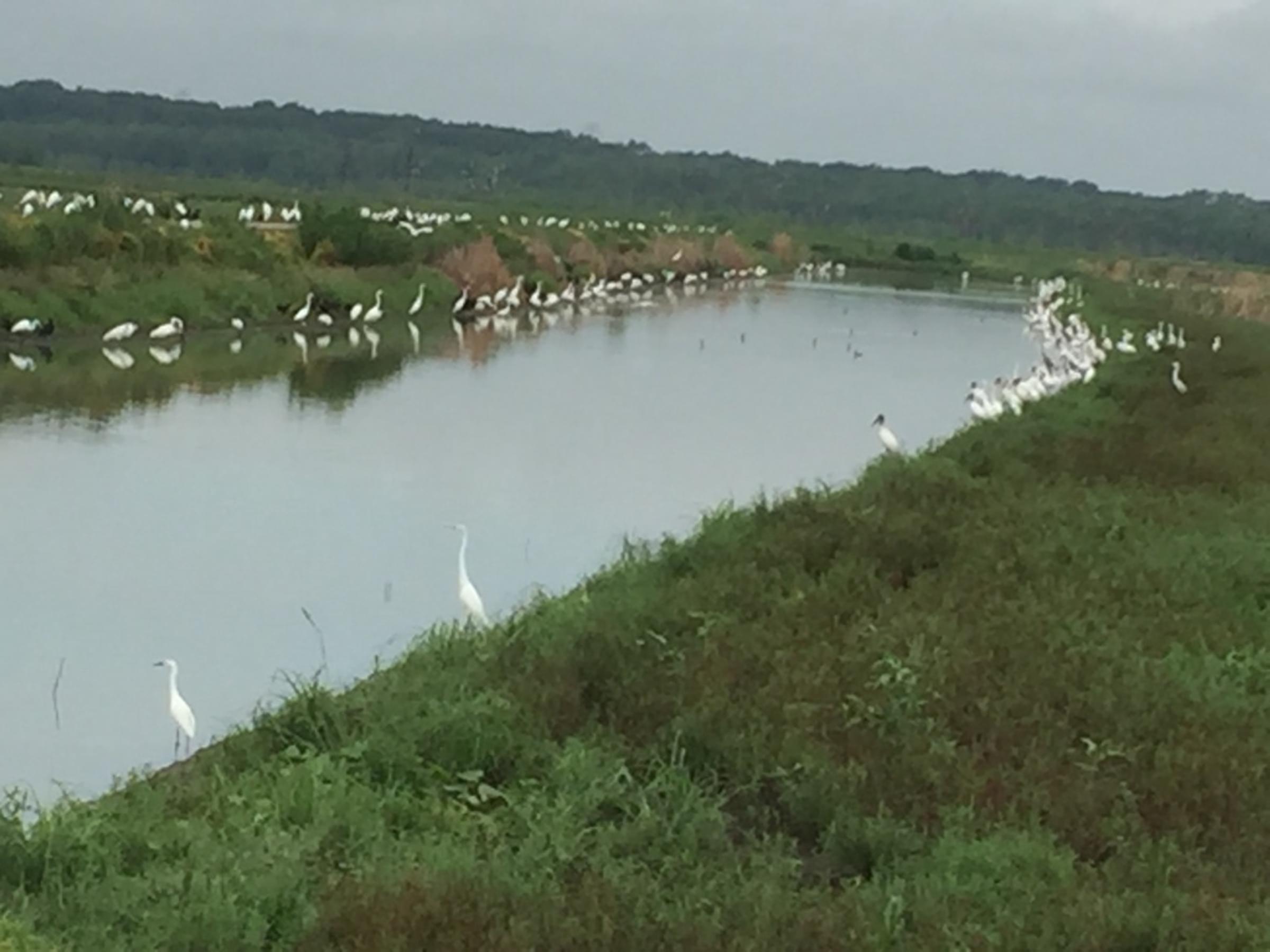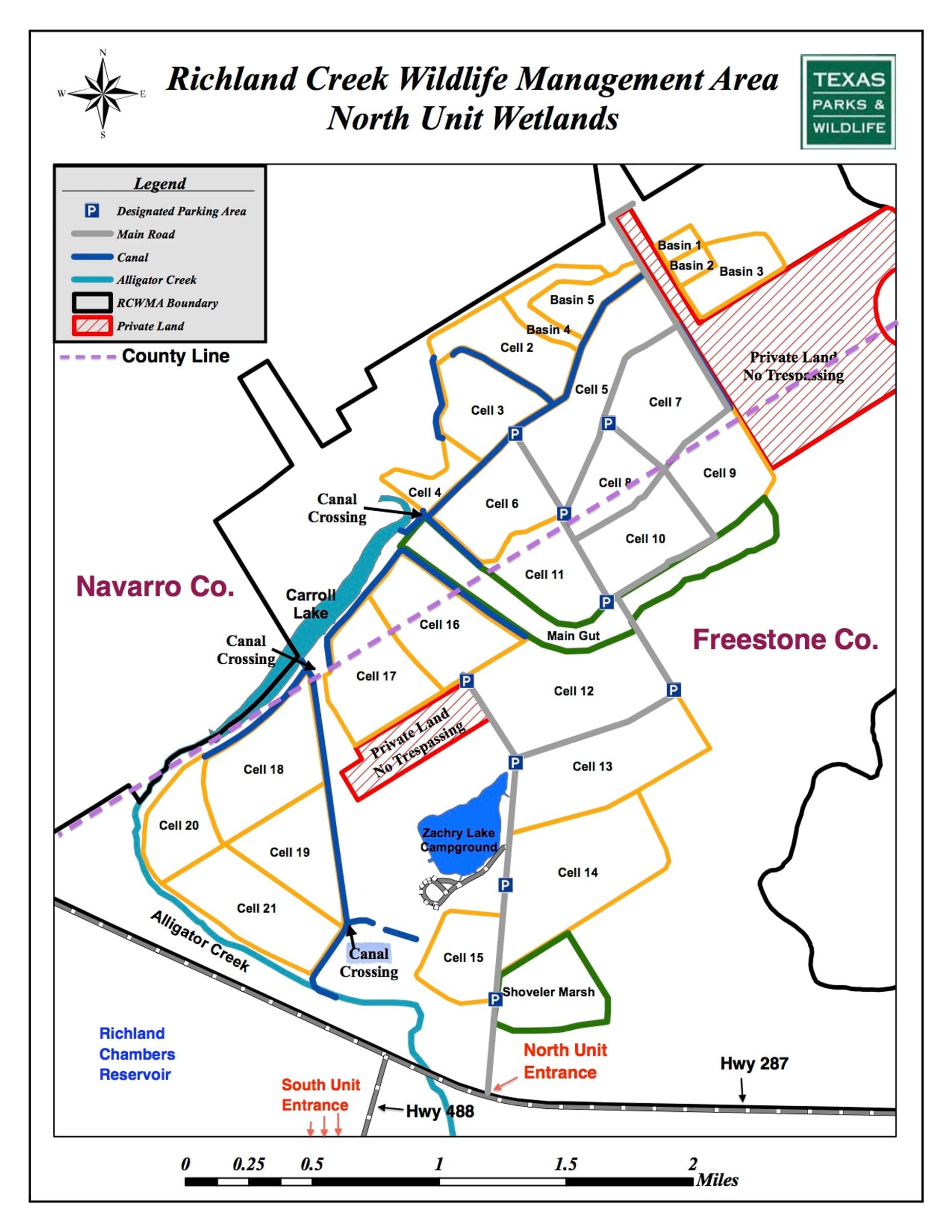Richland Creek WMA (N. Unit)(Navarro Co) PPW-W 019

Richland Creek WMA (N. Unit)(Navarro Co) PPW-W 019
Map & hunting scheduleWildlife Management Areas of the Texas Official Website
Public Hunting Lands Map booklet
Richland Creek Wildlife Management Area Official Website
Tips for Birding
ENTIRE AREA CLOSED 2023-24: Sept. 8-24, Oct. 9-12, Oct.27-29, Nov. 6-19, Nov. 27-Dec.27, Jan.2-28. Noon Opening Dates: Sept. 25, Oct. 13, Oct. 30, Nov. 20, Dec. 28, Jan. 29.
Otherwise the main gate to the Richland Creek Wildlife Management Area is usually open. Though in heavy rains, the Trinity River can flood the whole complex. For any questions call (903) 389-7080, the biologist is open to communicating with birders. Minimally a Limited Public Use Permit is needed to enter the RCWMA. See below for details as to where you can purchase these permits.
It's easier to have a copy of the cell maps with you, you can find a map showing the cell numbers and the Freestone/Navarro county line. For those of us that are particular, please keep a separate checklist on the Navarro County side from the Freestone list.
During hunting season, the gates to the parts of the Navarro cells might be locked, so you may have to walk in. If you call ahead of time at: (903) 389-7080, the local biologist may be able to get you in.
The Navarro County portion of the North Unit was the first wetland created. Cells 2,3,4 & 6 are more of a thinker marsh habitat. Carroll Lake is a huge rookery, Most of the waders nest there including Tricolored Heron and Roseate Spoonbill, plus Neotropic Cormorant and Anhinga.
The road connecting from Basin 5 around to basin's 1,2,3 is good for Acadian Flycather. Where this road turns to go to Basin's 1-3 there a road going left that doesn't show in the map. This section of woods is good for Swainson's Warbler and Great Crested Flycatcher.
Basins 1,2,3 are deeper and should contain diving ducks.
Birds of Interest
Ducks, ducks and more ducks. Summer you can find Mottled Duck and Black-bellied Whistling Duck. rails, Common & sometime Purple Gallinule. Least Tern. Wood Stork, Rookery has Great Blue Heron, Great Egret, Snowy Egret, Tricolored Heron, Cattle Egret, Green Heron and even Roseate Spoonbill have built nest, no confirmed successful nesting yet, Neotropic Cormorant, Anhinga, Bald Eagle. Marsh Wren, Swainson's, Prothonotary Warbler, Louisiana Waterthrush, Northern Parula, Common Yellowthroat.
About Wildlife Management Areas of the Texas
See all hotspots at Wildlife Management Areas of the Texas
Many Texas Wildlife Management Areas are open for activities such as biking, primitive camping, birding, fishing, hiking, equestrian activities, driving tours, and wildlife viewing.
Many times you need minimally a Texas Limited Public Use Permit (LPU - #175). You can purchase a Limited Public Use Permit or Annual Public Hunting Permit at any location that sells hunting licenses or at the Texas License Connection. If purchased online a representation of receipt is acceptable until official printer version has been mailed to you. In some cases it's not obvious when you need a permit for a Texas Wildlife Management Area so it might be better to be safe, because Texas game wardens do check for such permits.
About Richland Creek Wildlife Management Area
See all hotspots at Richland Creek Wildlife Management Area
The Richland Creek Wildlife Management Area (RCWMA) was named for Richland Creek, a tributary to the Trinity River, which flowed through the property prior to the construction of Richland-Chambers reservoir. Richland Creek Wildlife Management Area was created to compensate for habitat losses associated with the construction of Richland-Chambers Reservoir. The Area is owned and managed by Texas Parks and Wildlife Department. The mission of RCWMA is to develop and manage populations of indigenous and migratory wildlife species and their habitats and to provide quality consumptive and non-consumptive public-use in a manner that is not detrimental to the resource.
Richland Creek Wildlife Management Area is located in an ecotone separating the Post Oak Savannah and Blackland Prairie ecological regions and the Area lies almost entirely within the Trinity River floodplain. The Area is subject to periodic and prolonged flooding. Average annual rainfall is 40 inches. Soils consist primarily of Trinity and Kaufman clays. These bottomland soils are highly productive and support a wide array of bottomland and wetland dependent wildlife and vegetation communities.
Vast bottomland hardwood forest communities characterized by cedar elm, sugarberry, and green ash dominate the area. Honey locust, boxelder, and black willow are also common. Pockets of bur oak, shumard oak, overcup oak, water oak, willow oak, and native pecan also occur. The understory is dominated by hawthorn, cat briar, poison ivy, and rattan with shade tolerant grasses and forbs comprising the herbaceous layer. Large non-forested areas also occur and are characterized by diverse herbaceous communities.
The vast bottomland hardwood forests serve as nesting and brood rearing habitat for many species of neotropical birds. The Area has numerous marshes and sloughs, which provide habitat for migrating and wintering waterfowl, wading birds and shore birds, as well as diverse aquatic life.
Features
Entrance fee
Roadside viewing
Restrooms on site
Wheelchair accessible trail
Content from Wildlife Management Areas of the Texas Official Website, Public Hunting Lands Map booklet, and Dell Little
Last updated December 1, 2023
 Cell map with county line
Cell map with county lineDell Little
 map & hunting schedule 2023-24 for the North Unit
map & hunting schedule 2023-24 for the North UnitDell Little